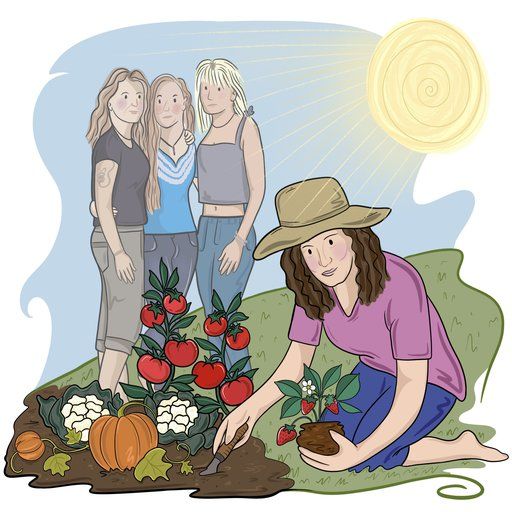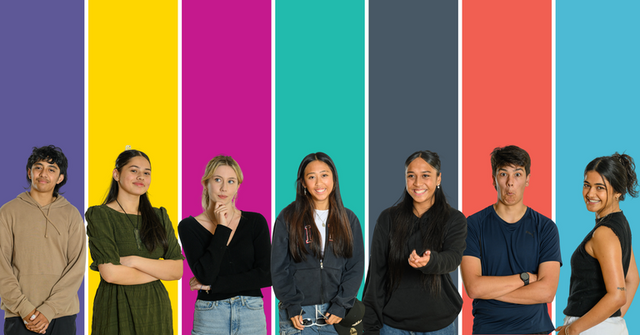Issues and Places
-
-
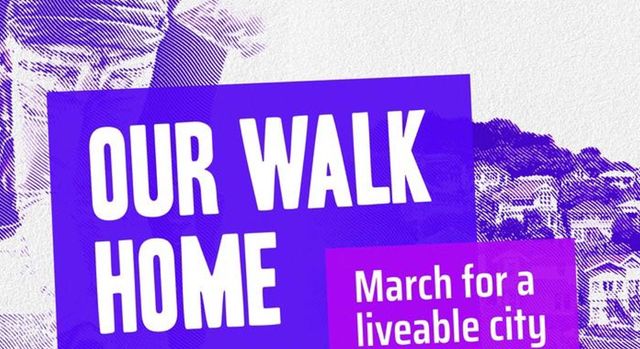
Wellington is a walkable city, and we're going to prove it.
- A City for People
- Join us on 11 March as we walk to Newtown and demand more homes in the suburbs close to the city centre.
- Accepted from A City for People feed 2024 by feedreader
- Tagged as:
- newtown
Newtown, Wellington, Wellington City, Wellington, New Zealand (OpenStreetMap)
-
-
-
Ngā Kōrero - Latest Stories from DCM
- Downtown Community Ministry
- Ngā Kōrero - Latest Stories from DCM Lives and smiles transformed at the DCM Dental Service communities where whānau are housed, connected, valued and thriving About Us Contact Lives and smiles transformed at the DCM Dental Service DCM’s emergency dental service has been operating since March 2016 – and is the only dental service of its kind outside of hospital emergency departments in New Zealand. Over 800 individuals have had their lives and smiles transformed thanks to the expertise of DCM’s volunteer dentists, led by Dr. Sophie McKenna, our lead dentist. Volunteer dentist Dr. Sophie McKenna leads DCM’s Dental Service. (Source: 1News.) Sophie’s father was a dentist, and she worked with him as a dental assistant during the school holidays. By the age of 17, she had decided that dentistry was a good path for her. Marrying Andrew, a fellow dentist, and working in different practices in the Wellington area, the two were able to share work and parenting responsibilities. Sophie first heard about DCM at a New Zealand Dental Association branch meeting, putting her name forward as a volunteer. “DCM was a surprise to me,” says Sophie. “I didn’t expect to receive so much pleasure from helping the whānau with their dental care. “When I first began volunteering, our son was dealing with significant health challenges, and I was at a low point. To come into DCM and see good people working hard to improve themselves from their very low points, with the support of DCM staff, was humbling and put my own woes into perspective.” Sophie explains that many of the people coming to DCM’s Dental Service need fillings, periodontal work, and extractions. “They often come to us with broken and missing teeth. When you are experiencing homelessness, living from crisis to crisis, oral health care may fall lower on the priority list, especially due to the expense. “But the big key to DCM’s success is not that treatment is free – but that DCM makes marginalised people feel so welcome when they come here. They don’t feel judged – and that includes when they sit in our dental chair.” Sophie treats Ngata during an emergency dental session at DCM. (Source: 1News.) “I’ll say, ‘what’s the most important thing that I can help you with today?’ And they look astonished,” says Sophie. “They are normally told to lie back, open up, and then a health professional gives them a carefully worded lecture about what isn’t being done, how disastrous things are. “And that’s not we’re here for. We’re here to make them feel better.” We know that poor oral health has been linked to gingivitis, oral infection, heart disease and strokes. But additionally, aesthetic issues can affect your ability to eat and speak – with a huge cost to your self-esteem. DCM Manahautū (Director) Stephen Turnock says that most of the people DCM works with have missing or decayed teeth, and the feelings of shame around this can take a toll. “When someone is continually looking at the ground, and not wanting to smile or feeling whakamā, then that creates more barriers.” This is why in 2023, we have begun creating dental impressions (diagnostic models or moulds) on-site at DCM and fitting whānau with partial plates – often of upper teeth. Sophie has been joined in this initiative by her husband, Andrew, who is no longer able to practice dentistry on his own due to an injury. Still wanting to support DCM, Andrew is able to assist Sophie in various ways. Sophie shares how life-changing their work has already been. Toko before and after. Toko was someone with missing incisors – the most visible teeth in the upper mouth. Sophie and Andrew created a mould and fitted him with replacement teeth. “Toko was exceptionally happy with the partial plate, and his ‘after’ smile filled the room!” says Sophie. Another person whose smile has been transformed is Lisa. Lisa has experienced homelessness, including rough sleeping, before she was housed through DCM’s Aro Mai Housing First service. From there, she was able to focus on her wellbeing, including her oral healthcare. Lisa before and after. Sophie had to encourage Lisa to do a ‘before’ photo while smiling so we could compare the results. “Now she can’t stop smiling!” Sophie says. When DCM first met Simon, he had little to smile about. DCM Outreach workers Ngaire and Hazel approached him on the street in Kilbirnie, where he says he was at his lowest ebb. “DCM saved my life, literally” Simon explains. “If there’s a God, it was great timing on all fronts.” Simon also survived the Loafers Lodge fire. On the tragic night, he knocked on people’s doors, urging them to evacuate, while managing to escape with his phone and wallet, and the clothes on his back. After a move into transitional housing, Simon was able to concentrate on other pressing matters, including agonising dental pain. He popped into DCM one day, and met Ali Janes, who coordinates our dental clinic. Ali got Simon in to see Sophie and Andrew, who extracted the problem teeth. “You could really see the difference it had made for him, which was awesome,” says Ali. “He left pain free and basically floated out of here!” Simon was left with very few teeth, but Sophie and Andrew supported him through the life-changing process of getting a full denture. “I’m still learning to smile properly, which is something I haven’t done for a long time,” Simon explains. “But – I can almost look in the mirror again. “When I needed DCM the most, you guys have always been there. Now I’m trying to pay it forward.” Simon popped into DCM to show us his new smile. DCM’s new initiative creating replacement teeth for whānau has been supported by a $5,000 community grant from the New Zealand Dental Association. “My vision for DCM’s Dental Service is that we are able to expand our services a little,” says Sophie. “Ideally, we would like to offer more opportunities to replace teeth that have previously been extracted, as we’ve been doing with the grant this year. “Currently, relief of pain is great, but what can we do to support our lovely people and lift them up even more? It is obvious from the beaming smiles of Toko, Lisa and others that restoring their smile boosts their sense of worth. Society inadvertently judges those with missing teeth. “When someone’s smile is restored and they feel and look good, they project a confidence and positivity that is difficult to measure. It is infused in their posture, their willingness to engage with others – and we see that their approach to issues that challenge them is altered for the better. “It’s a no-brainer to try to help with this more.” We mihi to Sophie and Andrew McKenna for their passion and professional expertise as they help to transform the lives and smiles of our whānau. Can you help support DCM’s Dental Service this Christmas? DCM is grateful to all those dentists who, like Sophie and Andrew, give their time to allow us to provide emergency dental care to the most marginalised people in Wellington. We would also like to thank the NZDA for their community grant, the St. John’s in the City Carter Fund for a grant toward a new dental chair for our service, and the Bowen Hospital Trust for their on-going support. But DCM’s Dental Service is primarily funded by YOU, the people of Wellington. If you would like to support the most marginalised people in our city – like Toko, Lisa, and Simon this Christmas – please click below and consider donating toward our appeal. Or, if you know a dentist or dental assistant who would like to learn more about working at the DCM Dental Service, we would love to hear from them! Support DCM's Dental Service Copyright © 2023 DCM. All rights reserved. Our mailing address is: DCM PO Box 6133 Marion Sq Wellington, Wellington 6011 New Zealand Add us to your address book Want to change how you receive these emails? You can update your preferences or unsubscribe from this list.
- Accepted from DCM alerts archive by feedreader
- Tagged as:
- kilbirnie
- lectures
- loafers-lodge
Loafers Lodge, 160, Adelaide Road, Newtown, Wellington, Wellington City, Wellington, 6021, New Zealand (OpenStreetMap)
-
-
-

Not all heroes wear capes – some wear gardening gloves
- Wellington City Council
- Local legend Campbell Maclean has been hard at work for four decades, planting over 2,500 native plants in the Town Belt section behind his home in Mount Cook - all on his own initiative.
- Accepted from WCC news HTTPS by feedreader
- Tagged as:
- mount-cook
- town-belt
Mount Cook, Wellington, Wellington City, Wellington, 6021, New Zealand (OpenStreetMap)
-
-
-

Porirua’s pokies put in the spotlight
- Porirua City Council
- Tell us what you think about the future of pokies in Porirua.
- Accepted from PCC Latest news items by feedreader
- Tagged as:
- porirua
- pokies
Porirua, Wellington Region, New Zealand (OpenStreetMap)
-
-
-
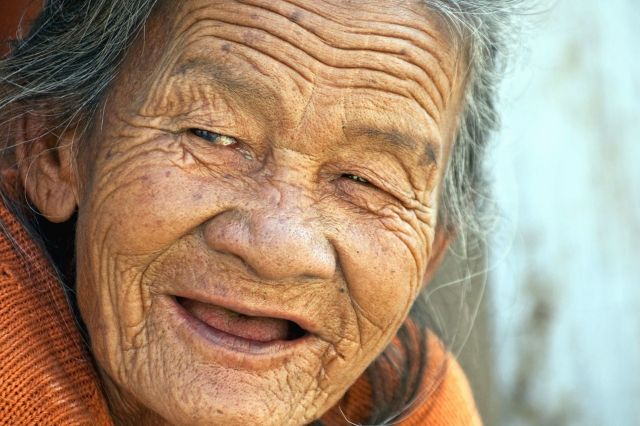
Weekly E-news – 16 June 2023
- St Andrews on the Terrace Presbyterian Church
- E NEWS 16TH JUNE 2023 I’m writing E News while watching Late News on News Hub and saw a quick glimpse of myself on TV albeit very briefly. The Loafers […]
- Accepted from St Andrews feed by feedreader
- Tagged as:
- loafers-lodge
St Andrew's on the Terrace, 30, The Terrace, Paekākā, Wellington Central, Wellington, Wellington City, Wellington, 6011, New Zealand (OpenStreetMap)
-
-
-
Council-Māori housing partnership in Lower Hutt wins national award
- Hutt City Council
- Takai Here Tāngata, an innovative partnership to provide quality housing in Taitā for whānau in high housing stress has tonight won Hutt City Council a national award for “Collaborative Government Action”.
- Accepted from Huttcity news scraper 2023 by feedreader
- Tagged as:
- lower-hutt
- housing
Lower Hutt, Lower Hutt City, Wellington, 5010, New Zealand (OpenStreetMap)
-
-
-
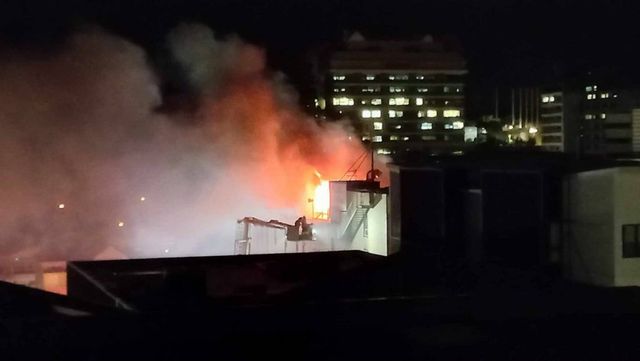
Loafer’s Lodge fire
- Eye of the Fish
- It is a pretty sad day to be writing – and we all know what about. Just over 36 hours ago, a building in Newtown...
- Accepted from Eye of the Fish feed by feedreader
- Tagged as:
- newtown
- loafers-lodge
Loafers Lodge, 160, Adelaide Road, Newtown, Wellington, Wellington City, Wellington, 6021, New Zealand (OpenStreetMap)
-
-
-

Newtown Fire – Wellington City Council update, Tuesday 16 May – 2.50pm
- Wellington City Council
- An update from Wellington City Council following this morning's tragic events in Newtown.
- Accepted from WCC news HTTPS by feedreader
- Tagged as:
- newtown
- wellington-city-council
- loafers-lodge
Loafers Lodge, 160, Adelaide Road, Newtown, Wellington, Wellington City, Wellington, 6021, New Zealand (OpenStreetMap)
-
-
-
Wellington fire at Loafers Lodge
- INNER-CITY WELLINGTON
- Stuff Fire and Emergency were called to the building, Loafers Lodge, on Adelaide Rd in Newtown at 12.
- Accepted from News - ICW by tonytw1
- Tagged as:
- newtown
- loafers-lodge
Loafers Lodge, 160, Adelaide Road, Newtown, Wellington, Wellington City, Wellington, 6021, New Zealand (OpenStreetMap)
-
-
-
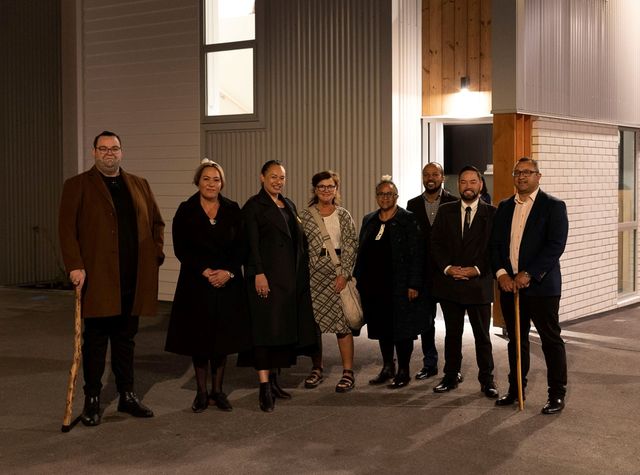
New whānau-focused social housing officially opened in Brooklyn
- Wellington City Council
- Expanding and multi-generational whānau, as well as families who require accessibility features, will benefit from nine new Wellington City Council-built homes in Brooklyn.
- Accepted from WCC news HTTPS by feedreader
- Tagged as:
- brooklyn
- housing
Harrison Street State Housing Redevelopment, Brooklyn, Wellington, Wellington City, Wellington, New Zealand (OpenStreetMap)
-
-
-
Shelly Bay 'primed' for coastal flooding
- Victoria University of Wellington
- With land movement factored in, a 100-year coastal flooding event at Shelly Bay will occur every year by 2040, so why is the development proceeding, asks Rewi Newnham.
- Accepted from VUW News feed by feedreader
- Tagged as:
- shelly-bay
Shelly Bay, Shelly Bay Road, Maupuia, Wellington, Wellington City, Wellington, 6011, New Zealand (OpenStreetMap)
-
-
-
What’s going on at Te Motu Kairangi?
- Wellington Scoop
- Ian Cassels’ Wellington Company and Taranaki Whānui need to throw a much clearer light on their development plans for the Miramar Peninsula/Te Motu Kairangi, as reported in a front-page DomPost article, beyond PR puffery. At present, the waters are decidedly murky.
- Accepted from Wellington Scoop features by feedreader
- Tagged as:
- miramar
- mount-crawford
- shelly-bay
Mount Crawford Prison (former), Nevay Road, Karaka Bay, Wellington, Wellington City, Wellington, New Zealand (OpenStreetMap)
-
-
-
Candidate Lachlan Patterson answers Renters United’s questions
- Renters United
- Lachlan is running for the Wellington City Council in the Wharangi/Onslow-Western Ward The post Candidate Lachlan Patterson answers Renters United’s questions appeared first on Renters United.
- Accepted from Renters United feed blog by feedreader
- Tagged as:
- onslow
- wellington-city-council
- election-candidates
-
-
-
Protected: Candidate John Doe answers Renters United’s questions
- Renters United
- Renters United asked every candidate in the Wharangi/Onslow Western Ward 17 questions about the issues that most concern renters in their ward. Here are Alexander Garside’s responses in full.
- Accepted from Renters United feed blog by feedreader
- Tagged as:
- election-candidates
- onslow
-
-
-
Our ghost airport: An opportunity to build much needed houses
- Low Carbon Kapiti
- By Paul Callister, 19 August 2022 After years of Kāpiti ratepayers subsidising a just a few passengers per day to fly out of Kāpiti airport, its closure in its current form gets closer. So what are the alternatives? There are those still lobbying to keep the airport open. The key group is the Kāpiti Aeroclub. […]
- Accepted from Low Carbon Kapiti feed by feedreader
- Tagged as:
- housing
- transport
Kapiti Coast Airport, Tainui Street, Raumati Beach, Paraparaumu, Kapiti Coast District, Wellington, 5252, New Zealand (OpenStreetMap)
-
-
-
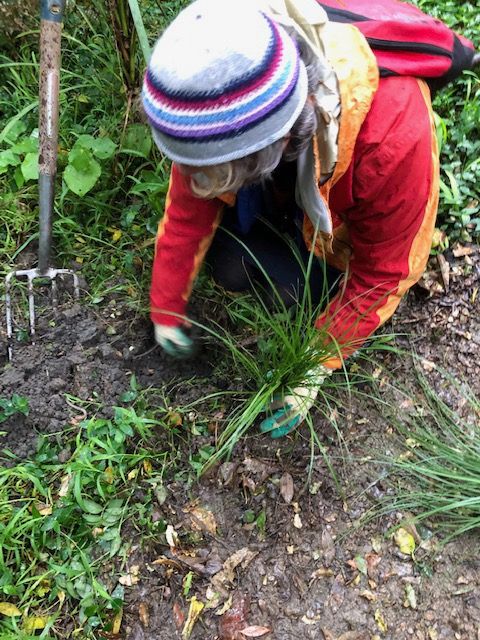
🌿Planting trees in the Town Belt🌿
- Brooklyn Scout group
- Several wheelbarrow loads of plants were given to us by the WCC Plant Nurseries to plant in a section of Prince of Wales Park that the Scout group has been working on for the past two years. Last Sunday Grant … Continue reading →
- Accepted from Brooklyn Scout group feed by feedreader
- Tagged as:
- town-belt
- wellington-city-council
Scout Hall, Harrison Street, Brooklyn, Wellington, Wellington City, Wellington, 6021, New Zealand (OpenStreetMap)
-
-
-
Shelly Bay Road Upgrade
- Kōrero Mai | Let's Talk | Wellington City Council
- We are upgrading the coastal Road running from Miramar Avenue intersection to the entrance of the future housing development.
- Accepted from Kōrero Mai | Let's Talk current engagements by feedreader
- Tagged as:
- miramar
- shelly-bay
Shelly Bay, Shelly Bay Road, Maupuia, Wellington, Wellington City, Wellington, 6011, New Zealand (OpenStreetMap)
-
-
-
February Update from DCM - Together we can end homelessness
- Downtown Community Ministry
- Getting to know you... Dev A landlord's story Dev Singh has purchased a number of rental properties for DCM to house people we support who have long histories of homelessness. Here he shares his story, and talks about the benefits and the challenges of being a part of this mahi.
- Accepted from DCM alerts archive by feedreader
- Tagged as:
- porirua
- covid-19
- housing
Porirua, Wellington Region, New Zealand (OpenStreetMap)
-
-
-

RMA Amendment Bill
- Upper Hutt City Council
- Government announces plans to boost housing supply.
- Accepted from Upper Hutt City news 2021 by feedreader
- Tagged as:
- housing
-
-
-
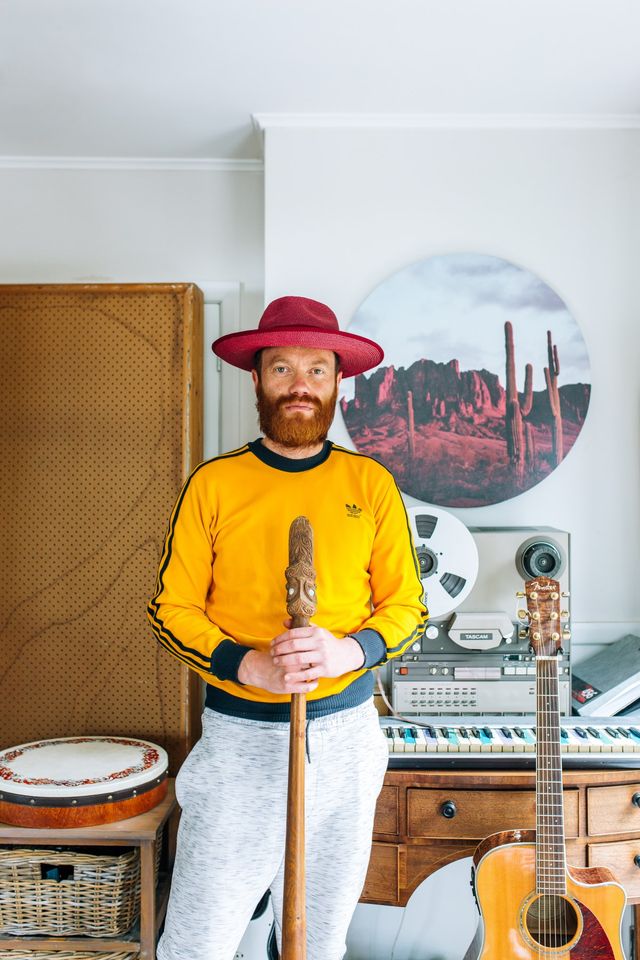
Hoea tō waka, row your own canoe
- Capital Magazine
- In a peaceful cul de sac in Newtown, a stone’s throw from the town belt, sits a nondescript brick house that would attract little interest from passers by, except when music occasionally drifts out through the open windows: a scatter of drums, a glittering harp, voices that glide and soar. This is the home of musician Mara TK, his whānau, and his new record label – Meetinghouse Records. Its aim is supporting and releasing indigenous music that, while recognising the past, fixes its vision squarely on the future.
- Accepted from Capital Magazine by tonytw1
- Tagged as:
- newtown
- town-belt
- music
Newtown, Wellington, Wellington City, Wellington, New Zealand (OpenStreetMap)
-
-
-
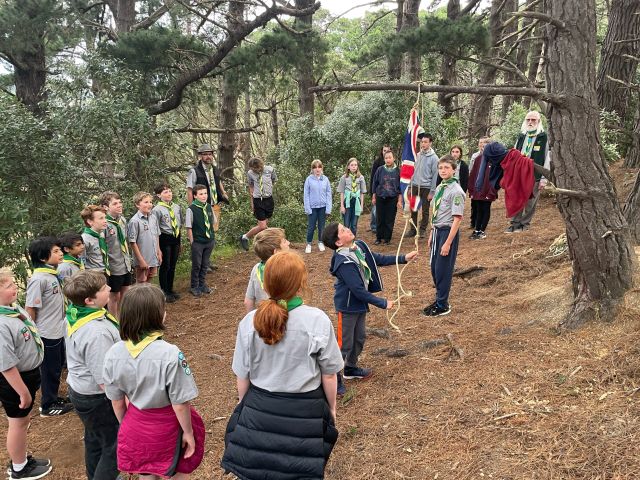
Scouts Bivvy Building
- Brooklyn Scout group
- Tonight we ventured into the town belt and (with limited resources) constructed bivvy’s. Luckily it was an unusually mild evening and as there was a limited water supply (collected from a local creek), their effectiveness as shelters was not really tested!
- Accepted from Brooklyn Scout group feed by feedreader
- Tagged as:
- town-belt
Scout Hall, Harrison Street, Brooklyn, Wellington, Wellington City, Wellington, 6021, New Zealand (OpenStreetMap)
-
-
-
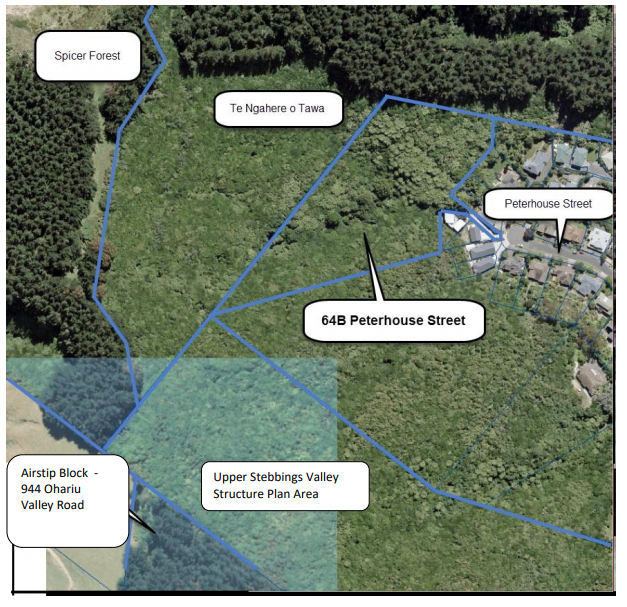
Council gifted land for Outer Green Belt
- Wellington City Council
- Wellington City Council has agreed to the generous gifting of land to be used as scenic reserve, adding ecological value and more diversity to the Outer Green Belt (OGB) in Tawa.
- Accepted from WCC news HTTPS by feedreader
- Tagged as:
- tawa
- town-belt
Tawa, Wellington, New Zealand (OpenStreetMap)
-
-
-
Minutes of the June 2020 Meeting
- Newtown Residents' Association
- We met on Monday June 15th at Newtown Hall at 71 Daniell St – the first face-to-face meeting since the covid-19 lockdown. We talked about Newtown issues and developments. See the full minutes here.Download
- Accepted from NRA news by feedreader
- Tagged as:
- newtown
- covid-19
- developments
- issues
Newtown, Wellington, Wellington City, Wellington, New Zealand (OpenStreetMap)
-
-
-
Weekly Wrap Up (Week 12, Term 2)
- Wellington High School
- Important Dates Monday 20 July: Start of Term 3 Wednesday 22 July: Parents’ Evening (Senior Students) Monday 27 July: Parents’ Evening (Junior Students) Monday 27 July: Board of Trustees meeting 6pm Important Information Principal’s message In his end of term Principal’s message, Dominic reflects on the events of the past month including our recent open evening and music evening, events which, not so long ago we felt would be unable to take place. To read Dominic’s full report, click here. What’s happening? Open Evening and 2021 enrolment We welcomed over 400 families and whānau to our open evening last Monday on what was possibly the coldest night of the year. Our team of student and staff guides took tours around the campus, students were actively involved in promoting different areas of school life, and everywhere was alive and buzzing with activity. Enrolments are now open for 2021. Our enrolment process starts online at: https://portal.whs.school.nz/index.php/enrolment. If you have any questions, please email Jude Aspinall, our enrolment officer on jude.aspinall@whs.school.nz Music Evening Our Music Evening on Wednesday 1 July gave students the opportunity to showcase their talents. With a range of big band, groups and solo items, pieces in a range of styles and genres, it was a fabulous evening compered, as always by music teacher Fritz Wollner. To view the photo gallery, click here. Instrumental and vocal lessons update If your Junior student is interested in taking instrumental / vocal lessons but has not yet enrolled, please download the form from the Student Hub and hand in or email the completed form to Fritz Wollner Lessons will be reorganised for Terms 3 and 4. If students have not been attending regularly, they need to see Mr Wollner as soon as possible to ensure they do not lose their spot. Tamatha Paul – lunchtime lecture The Feminist Club was delighted to welcome Wellington Councillor Tamatha Paul to deliver this Thursday’s lunchtime lecture. Tamatha (Ngāti Awa / Waikato Tainui) was first elected to Council in 2019 and is one of three Pukehīnau / Lambton Ward counsellors for 2019-2022. As an independent candidate, Tamatha campaigned on issues including zero waste, connecting communities and the importance of prioritising future facing leadership. As can be seen from these pictures, Tamatha’s visit attracted a large audience, keen to welcome and listen to her. Year 10 Computing – Photoshop and political discourse Students in Gus Donaldson’s Year 10 computing course have been developing skills in Photoshop through working on a project on the theme of political discourse. Their work is currently on display in the foyer outside the library. The posters, with the narrative from their creators alongside them, are powerful pieces of work that clearly exemplify the students’ views and response to current issues in the world around them. The display will remain in place at the start of Term 3 and you are invited to come and view it. WHS Ink – Junior Art club zine 30 Year 9 and 10 students have been working on their own artwork during each week’s WHS Ink sessions. Coordinated by Teacher Aide, Connor Morrison-Mills, this group of talented students’ work is now included in their very own zine. Click on the image below to see more. Outdoor Education’s snowy tramp It has been cold enough for many this week, with the storms and freezing winds around Wellington. The Outdoor Education students showed their mettle by heading out on a tramp in the Tararua range earlier this week. They made it as far as the Powell Hut before the weather conditions made it too risky to continue and they turned back. Achievements He Kākano – AWD Tenpin Bowling On Thursday 2 July, He Kākano students competed in the annual AWD Tenpin Bowling competition against students from other Wellington colleges. All students and staff had a fantastic time and there were some really strong bowlers in the group. The top three WHS students were Talib Prime, Darius Ngature and Joshua Nathan. Roxy5 finalists ‘En Passant Films’ and ‘Look Away’ are both WHS finalists in the Roxy5 film competition this year. Screenings will take place on Friday 31 July at the Mclaurin Theatre, Victoria University. The winner will be announced at the Red Carpet awards evening at the Roxy Cinema on Wednesday 5 August. We are waiting eagerly to to see whether The Work of An Artist (En Passant Films) or Hey Cassie (Look Away) will scoop a place. Pictured below are En Passant Films: Sam Quinn, Rory Maher, Nym Jones, Liv Calder, Sky Gobbi, Jack Whitehead, Namu Dahlberg and Ashton Gordon. Open Evening: Business Studies Logo quiz winners Many thanks to all those students and whānau who entered the Logo quiz competition that ran at our recent open evening. The answers were: Air NZ, Disney, The Warehouse, Starbucks, Wellington HS, Te Papa, The Heart Foundation, Wellington City Council and Netflix. The winners were Toby, Tama, and Oscar. Sports Boys 1st XI Football On 27 June, our boys 1st XI football team beat Newlands College 4-0, taking them to the top of their pool. This Saturday the team will play St Patrick’s second team. If the team win or draw they will go into play-offs on 18 July against either Onslow College or Wellington College for a place in the Youth Premier Reserve. Good luck team!
- Accepted from WHS news by feedreader
- Tagged as:
- newlands
- tours
- issues
- bowling
- business
- music
- te-papa
- theatre
- wellington
- education
- art
- libraries
- storm
- snow
- lectures
- cinema
Wellington High School, Taranaki Street, Mount Cook, Wellington, Wellington City, Wellington, 6011, New Zealand (OpenStreetMap)
-
-
-

Plimmerton Farm: getting greenfields right
- Talk Wellington
- If we’re hellbent on doing more residential development in greenfields, what does “decent” look like in Plimmerton, hilly land near an existing suburb – like most of our region’s greenfields? This post is basically a guide for anyone who cares about Plimmerton, good urban development, or healthy wetlands, streams and coast, but is time-poor and can’t face going through the truckloads of documents they’ve stuck up without any specific meta-guidance (some FAQ are here). Hopefully this will help you pop in a submission! PCC’s “information” pages they suggest you use for submitting. Every one of these is a large PDF document, 90% written in technical language… aargh! The background: what where and how For those who don’t know, Plimmerton Farm’s a big proposed subdivision of hilly farmland draining into the significant Taupō Wetland and to Plimmerton Beach, just over the train line and highway from Plimmerton village (original Ngāti Toa name: Taupō). It’s going through a Streamlined Planning Process, a pre-COVID government scheme for accelerating development. The key step is the requisite change of the land’s zoning in the Porirua District Plan (“rural” zone to “residential” and other “urban” zones) that sets out what kind of stuff can then be built, where. It’s mostly streamlined because there’s just one shot for the public to have input on the plan change. One shot. Why submit? I was born and raised in Plimmerton, live here now, and intend to for the rest of my days. I’d love to see it grow, well. I would love Plimmerton to get more wallets, more hearts and minds, more faces (more diverse ones too!). But not with more traffic, and pointless damage to our environment. Right now, the proposal has some serious flaws which need sorting. I say Sorting because the changes won’t make it crazy innovative, just good enough for a development in the spot it is, being kicked off in 2020. Time matters too: there’a a bunch of good things happening imminently (and some bad Porirua trends that need to be reversed). I cover these in Get it right, below. It’s worth submitting because given the situation, a 1990s-grade development just won’t cut it. So what about Plimmerton Farm needs to change? It boils down to two themes: dial down the driveability and dial up the liveabilitymake Local the logical and easy choice for daily needs I’ll outline what needs to change in each. NOTE: There’s a third – don’t stuff the wetlands and streams. This is really important as Taupō Wetland is regionally significant, and all our streams and harbours have suffered from frankly shameful mismanagement of sediment from earthworks-heavy subdivisions like Aotea and Duck Creek, and from the earthworks-a-rama of Transmission Gully. Friends of Taupo Swamp have an excellent submission guide for you – add in some of their suggested bits to your submission. I: Dial down the driveability, dial up the liveability There aren’t many truly black-and-white things in life, but there’s one for towns: If a street is nice to drive in, it’ll be a crappy place to do anything else in (walk / eat / hang out / have a conversation / play / scoot or cycle / shop / have a pint). If it’s nice to do anything else in, it’ll be a crappy place to drive in. Mostly this is because of the nature of the automobile: big solid things that smash into our soft bodies if someone makes a mistake (75% odds of death if that’s at 50km/hour, 10% odds of death if at 30km/hour) big objects that need lots of space for manoeuvering and especially parking – which offstreet can be crazy expensive and push up the cost of a home, and onstreet hoover up valuable public space. big solid things driven by us real humans (for a while at least) who respond to the environment but also get distracted, and generally aren’t good at wielding these big solid things safely. The transport setup proposed for Plimmerton Farm makes for a much too driveable and poorly liveable place. 1. Narrow down all the roads. The current proposal’s roading setup has roads and streets that are too big, and there’s too much of them. Right sized roads for a liveable community The cross-sections for the roads include on-street parking and really wide lane widths. This is really gobsmacking for a consortium that talked a big talk about good practice. For all the reasons that Low Traffic Neighbourhoods are good, this is bad. (And it’s especially nuts when you realise that the excessively wide “arterial” roads (11 metres!) will need earthworked platforms built for them where they’re drawn running up the sharp ridges and across the tops of gullies. Expensive, damaging for the environment, and … what were they thinking?) So recommended changes: NARROW DOWN THE ROADS. Seriously. Design all the living-area streets and roads, and the centre, to be self-explaining for an operating traffic speed of 30km or less – that’s the speed where mistakes are rarely fatal. What does that look like? The designers will know and if they don’t they should be fired. Narrower crossing distances; chicanes (great way to incorporate green infrastructure and trees and seating!); narrowed sight-lines (trees! sculpture!) so no-one driving feels inclined to zoom. Reduced trafficked lanes (rori iti on the larger roads!), with properly wide and friendly footpaths. Threshold treatments, humps, modal filters, all the things we know very well are the natural ways to slow us down when driving, and make streets nicer for people. The beauty of all this “restriction” on driving is how much it frees us up for making everything else appealing. Streets become hospitable for kids to walk, scoot, bike to school safely, using the road not the footpath. Older people and those with impairments can walk and wheelchair safely. Teens coming home from town of an evening can scoot or bike home, safely. Popping down to the shops or for a coffee or to the train becomes a pleasure to do on foot, or on a scooter or bike. And you’re moving in a legitimate way – seeing and being seen, not stuck off in the bush on a “recreational” track like what they’ve described. The ordinary streets and roads are walkable, bikeable, scootable, mobility-scootable, and perfectly driveable, equally safe and useable in all weathers and anytime of day or night. Used to be a big, fast road. Now, kids bike to school and old people can chill out on it. (Mark Kerrison) (And in case you’re worried about firetrucks / rubbish trucks / buses, recall that on even Wellington City’s far more winding, narrower hilly streets everyone gets their rubbish collected and fires fought just fine. On public transport, smaller buses, like those that community transport operators use, are the way of the future for less densely-populated areas like this). Don’t build the through and loop roads. You don’t need signs like this when the only people who bother to drive in are those who live there, or who are visiting friends, because you just have to drive out again the way you came. When it’s the place you live, you’re invested in not being a dick far more than if you’re just out for a drive – or worse, out for a bit of a boyrace hoon on a massive loop route through a whole place. So just don’t build those big connector roads that enable people to drive easily from one residential area to the next, especially the ones up in the hilltops (section C) that just say “come for a hoon!” Instead, connect the living spaces heavily with bikeable, walkable, scootable, disability-friendly streets and lanes, and as much as possible, only one way in and out for cars from each living area. II: Make local logical and easy Plimmerton is a true village, with a great little centre (including a train station!) but Plimmerton Farm is ultimately a damn big area. The way to go is to enable people to get the basics of life – like school, groceries, a coffee – with a little local trip on foot, bike or scooter – it’s more of a bother to get in the car. Right now though, it needs two changes: 1. Provide for a second centre “Bumping into” spaces are known to be crucial to a feeling of neighbourhood, and in the (initial) absence of third places (worship places, community hall, sports club, cafe/pub, a supermarket is a vital social centre. Yet the north end of Plimmerton Farm is currently a deadzone for anything except residential. What things will probably look like under current layout. Like in Edwards Scissorhands without the interest of a castle. There’s no provision for a place to do your household groceries, so people will drive to Mana New World – more car trips – and less opportunity to bump into people who live nearby. (There’ll be no school in Plimmerton Farm for a while, because Ministry of Education isn’t allowed by the Education Act to build a school somewhere until there’s a certain population density of kids to fill it. A shitty Catch-22 for developments which is hopefully going to be fixed … sometime. Just another reason to make walking, biking and scooting really kid-friendly, as extra dropoff traffic for kids going to St Theresa’s, Plimmerton School, Paremata and Pukerua Bay schools will be a nightmare.) So they should provide for an additional centre in the north, including a groceries place of some kind. 2. Intensify within walking distance of Plimmerton proper. We should intensify properly, with lots of medium and even some high density (6 storeys of nicely laid-out density done well!) in the area that’s within a 5-minute walk of Plimmerton Village. The more people can live and work with access to all its many amenities, and its rail station (10 min to Porirua, 30 min to Wellington), the better. But there’s not enough density provided for there. Plimmerton Railway station: buzzing in 1916 and has only got bigger. (Photo: Pātaka Porirua Museum) So they should add another zone – E – of higher density in that 5-minute walking catchment of Plimmerton Village. What could it look like? A good example is 3333 Main, Vancouver . Submission tips On the site they ask you to fill in a Word or PDF form, saying which specific bit of the gazillion proposals you are talking about and the specific changes you want. This is a BS way to treat the vast majority of people submitting: normal non-professionals, just regular people who care about good development and liveable places. So just don’t worry about that. In those question 6 column boxes just put “Transport” and “Layout”. It’s the professional planners’ job to figure out specifically how to change a planning document. Just be specific enough that they know what you want to see. The text above is worth copying and pasting – it’ll be enough. And don’t forget the Friends of Taupo Swamp and Catchment advice is essential – definitely go read and use. That’s all you really need – just go submit! But if you’re keen to know more reasons why they should be doing this better, here’s some… Get it right, now Once this plan change is through, traditional developers like Gillies like to whack in all the infrastructure – hello, massive earthworks. And yet the place will take decades to fill with actual people – those hearts and minds and wallets. (Note even before COVID, Porirua’s growth rate was 0.1% per year. Yep, one tenth of one percent.) And extra pressure’s on to do this better because all these things are features of the next one to three years: the One Network Road Classification (sets the design specs for roads of different types) is being updated right now to be more people-friendly in the specs for roads in residential and centre areas, so designs like Plimmerton Farm’s will soon be Officially Bad Practice Sales and riding of e-bikes and e-scooters are going through the roof, continuing through and beyond COVID – this shows no signs of slowing, and prices are dropping. E-power flattens the hills of Plimmerton Farm and makes wheely active travel a breeze for the middle-class people who’ll be living here, if the streets and roads are hospitablePlimmerton Railway Station (on the most popular Wellington train line) is being upgraded to be a terminus station – i.e. better servicesThe Wellington Regional Growth Framework is setting a bunch of directions for councils on how to grow well, including well-known but often well-ignored issues like intensifying around public transport hubs Councils will soon be required to do to a bunch of a bunch of international good practice including get rid of many minimum parking requirements (in the news lately), and to upzone (enable intensification) of landuse in the walking catchment of public transport hubs. (5 min walk = approx 400 metres, 10 min = 800m).Bad trends we need to stop: Porirua’s really high car-dependency (we own cars a lot and drive a lot) is continuing, due to car-dependent urban form [PDF]– despite nice words in council’s strategic intentions.People living outside Wellington City are mostly to blame for our region’s 14% increase in emissions from transport in just 10 years. OK go submit now – and share with anyone who you think might care!
- Accepted from Talk Wellington posts by feedreader
- Tagged as:
- paremata
- porirua
- transmission-gully
- sculpture
- government
- parking
- design
- covid-19
- law
- planning
- wellington
- education
- developments
- sport
- buses
- coffee
- zoo
- people
Wellington Zoological Gardens, Manchester Street, Melrose, Wellington, Wellington Region, 6021, New Zealand (OpenStreetMap)
-
-
-
Solving housing crisis will take leadership
- Victoria University of Wellington
- It is not just about numbers, it is about a wider range of housing for our increasingly diverse population, writes Associate Professor Morten Gjerde.
- Accepted from VUW News feed by feedreader
- Tagged as:
- housing
-
-
-
Minutes of the May meeting
- Newtown Residents' Association
- We met again by Zoom on Monday 25th May. After a discussion of local issues and projects we moved to a discussion of the Wellington City Council Draft Parking Policy and Draft Annual Plan. Submissions are due on June 8th for both of these consultations. See the minutes of the meeting here. Newtown Residents’ Association Minutes May 2020Download
- Accepted from NRA news by feedreader
- Tagged as:
- newtown
- issues
- consultation
- parking
- wellington
- zoo
Newtown, Wellington, Wellington City, Wellington, New Zealand (OpenStreetMap)
-
-
-
Budget 2020 'too weak, too short'
- Victoria University of Wellington
- The New Zealand Government has not gone hard or early enough fiscally, and is planning on winding it back far too quickly, writes Dr Simon Chapple.
- Accepted from VUW News feed by feedreader
- Tagged as:
- government
- planning
-
-
-
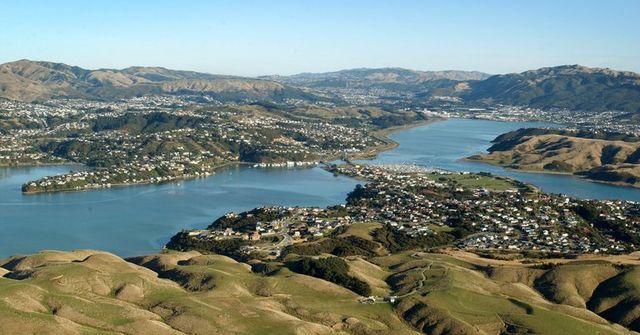
Council to use Streamlined Planning Process for proposed Plimmerton Farm Plan Change
- Porirua City Council
- The next step in the Plimmerton Farm process is under way.
- Accepted from PCC Latest news items by feedreader
- Tagged as:
- planning
-
-
-
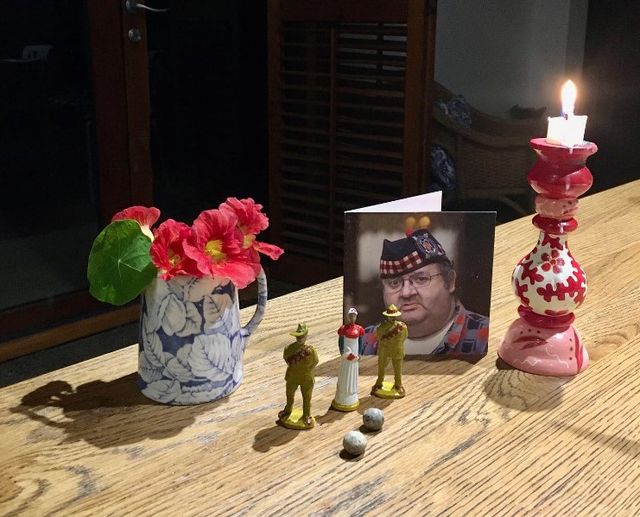
Weekly News for Friday 24 April 2020
- St Andrews on the Terrace Presbyterian Church
- Kia ora e te whanau We had some major technical issues recording this week’s service but with the skills ofRead More
- Accepted from St Andrews feed by feedreader
- Tagged as:
- issues
St Andrew's on the Terrace, 30, The Terrace, Paekākā, Wellington Central, Wellington, Wellington City, Wellington, 6011, New Zealand (OpenStreetMap)
-
